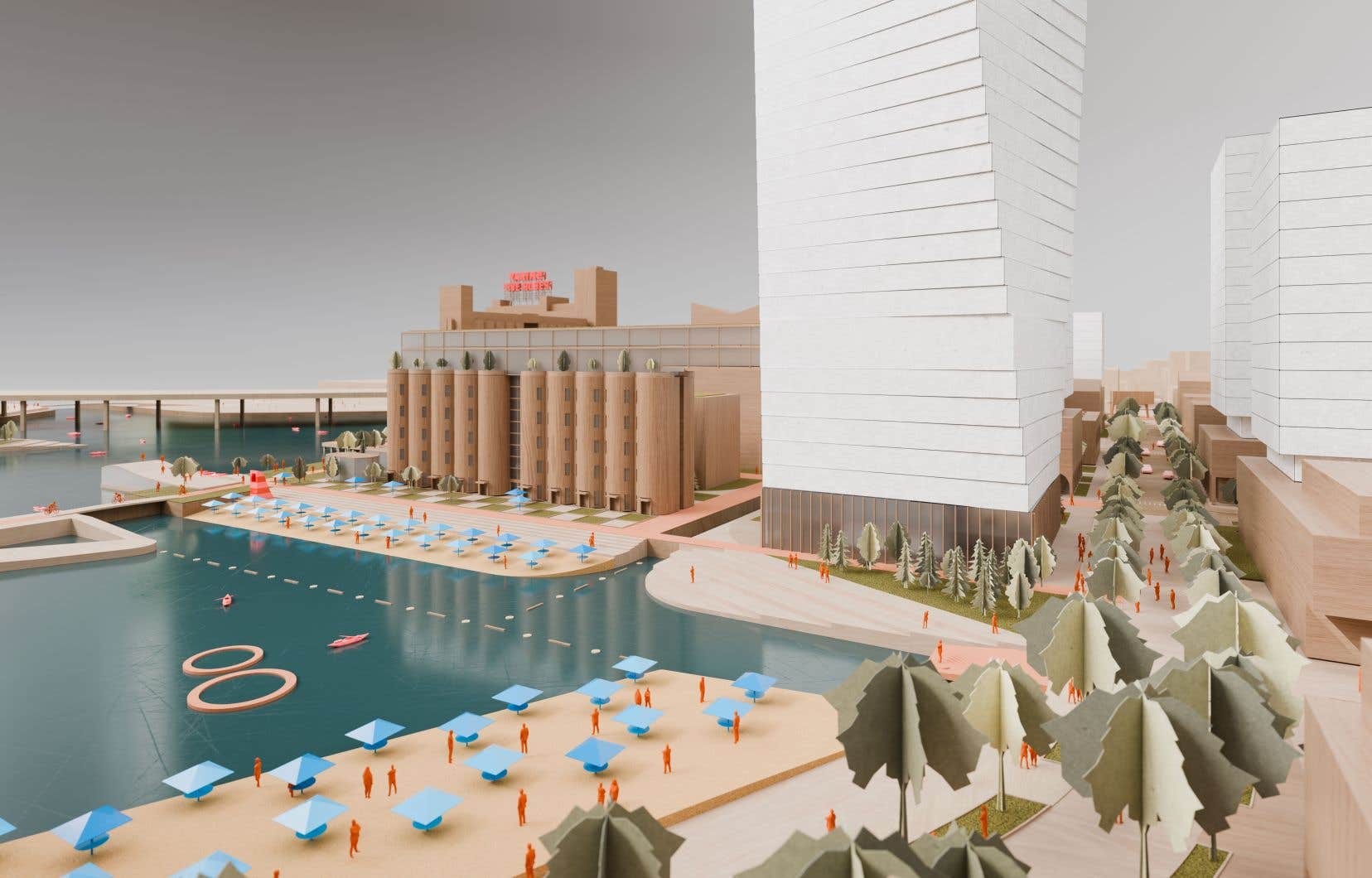The Wellington Basin, a vestige of Montreal’s industrial past, will be decontaminated at a cost of $77 million to create an urban beach in the heart of a new neighborhood of 2,800 housing units planned in the Bridge-Bonaventure sector, near the city center and the Lachine Canal.
The Canada Lands Company (CIS), owner of these former industrial lands, plans to develop an exemplary neighborhood from an environmental and social point of view, with 55% affordable housing. Bassins Beach would allow Montrealers to swim in the city, in this area located at the confluence of Griffintown, the city center and industries such as the emblematic Farine Five Roses factory.
“We want to create something that will be the spark plug for the Bridge-Bonaventure sector,” explained Christopher Sweetnam-Holmes, director of real estate for Quebec at SIC, on Tuesday morning.
He and his team presented the master plan for this ambitious real estate project which includes residential, commercial units and a hotel. An artisan district, around the Forges de Montréal, and an arts and crafts school are also part of the project.
The mayor of Montreal, Valérie Plante, reacted favorably to the federal company’s plan.
“We have high expectations regarding this land, which is governmental, which is public. We have been waiting for this master plan for a long time and I am convinced that we will be able to come to an agreement with the Canadian government to promote the interests of everyone, namely: we must build a lot, we must build quickly, but also we want to protect the views of Mount Royal, we want to protect the waterfront so that it remains public,” she declared on the sidelines of an announcement on the pedestrianization of the streets, Tuesday morning .
The SIC is preparing to launch a call for interest to choose a real estate developer ready to construct the buildings according to the guidelines unveiled Tuesday.
For its part, the SIC plans to decontaminate the land, including the swimming pool, at an estimated cost of $77 million. The basin will be separated from the rest of the Lachine Canal and the Peel Basin in order to keep the water in this “naturalized basin”, a bit like Jean-Doré Beach at Jean-Drapeau Park. The federal company will also develop streets, aqueducts and sewers, as well as three parks.
A desired REM station
SIC hopes to begin infrastructure development in 2025. The sector would be transformed over a period of approximately 10 years. The beach would be ready halfway through the project, around the year 2030, said Pierre-Marc Mongeau, vice-president of real estate for Quebec at SIC.
An “iconic” tower of around forty floors is also part of the project. The SIC intends to launch an architectural competition for this building likely to contribute to the visual identity of the future district.
The federal company is committed to offering 1,000 affordable or social housing units, or 55% of the 2,800 units planned — more than the City’s regulations, which provide for 40% social or affordable housing per real estate project. According to the standards of the Canada Mortgage and Housing Corporation (CMHC), affordable housing corresponds to 80% of the median prices in an area, recalls Christopher Sweetnam-Holmes.
The SIC and the City of Montreal are trying to convince the Legault government to build a Réseau express métropolitain (REM) station in the future district on the line between Brossard and the city center. The federal plan also provides for the development of streets reserved for pedestrians and bicycles, as well as a bridge closed to automobiles between this future district and Griffintown, on the other side of the Lachine Canal. In addition, the cycle path which runs along the canal will be preserved.
With Jeanne Corriveau
